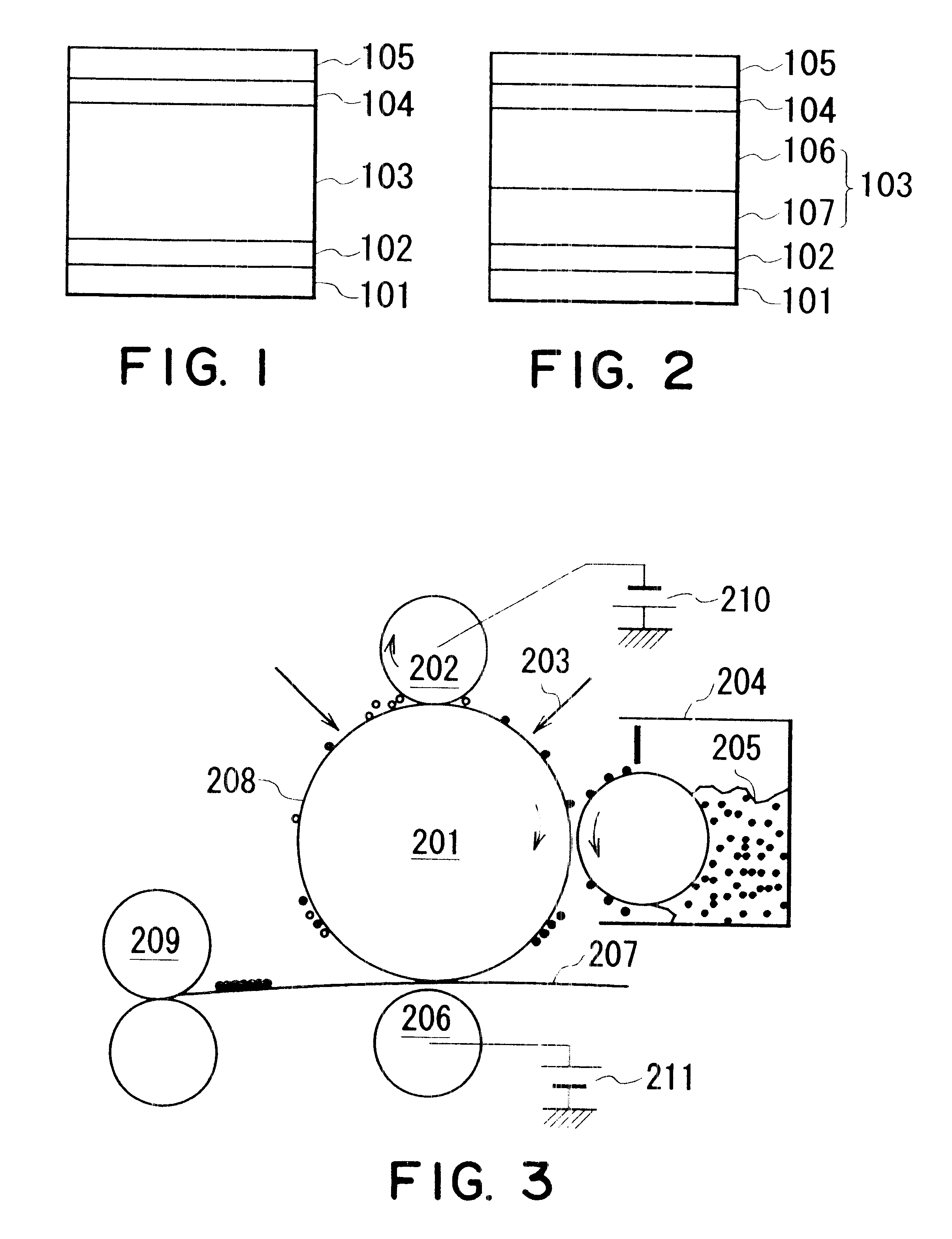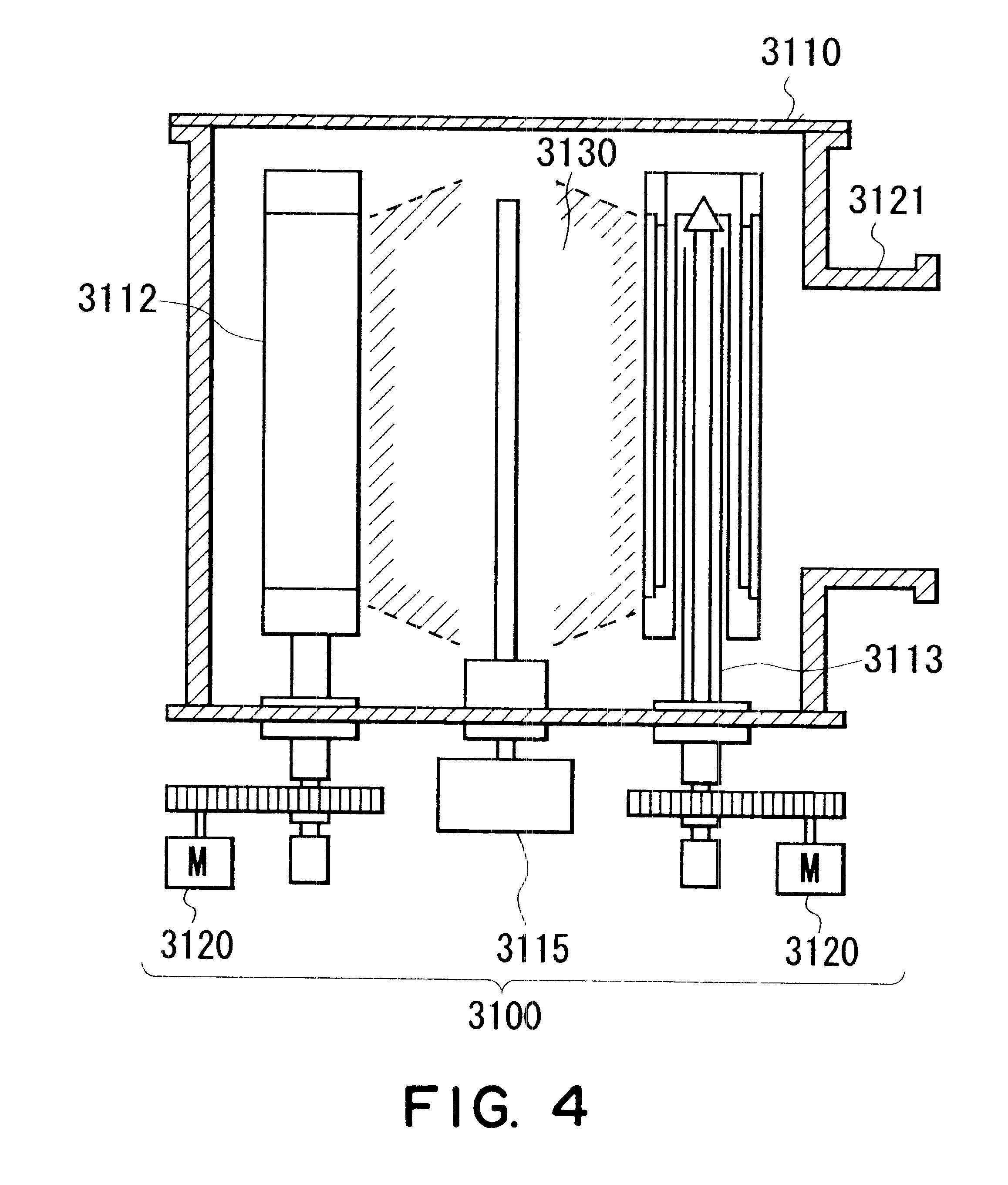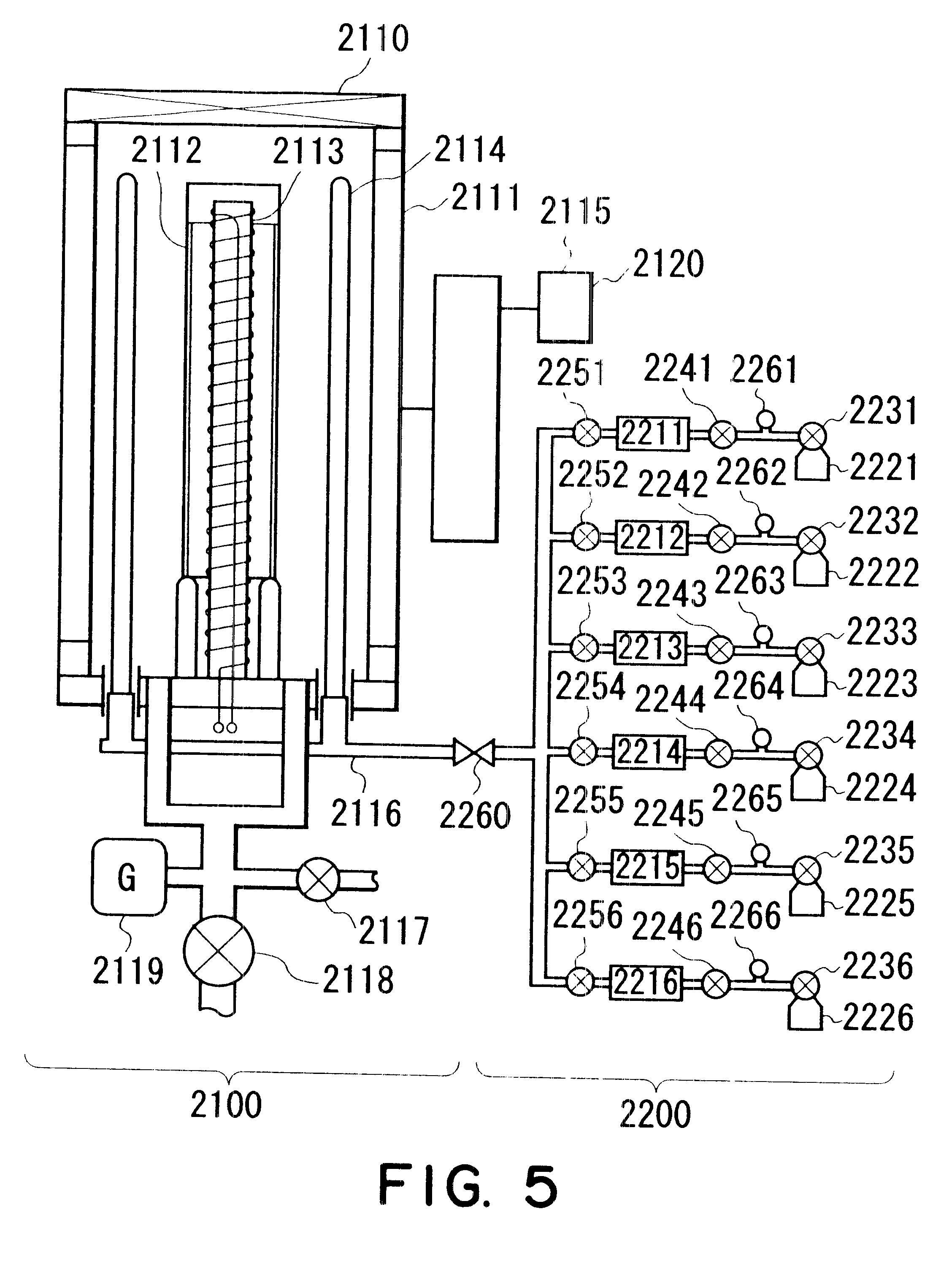Electrophotographic image forming method and apparatus
a technology of electrotrophotography and image forming, which is applied in the field of electrotrophotographic image forming methods and apparatuses, can solve the problems of posing an obstacle to the wide popularization of single posing a difficulty in realizing a cleanerless system capable of fully enjoying, non-single crystalline silicon photosensitive members, etc., to achieve stable and clear images, reduce waste, and long charge member life
- Summary
- Abstract
- Description
- Claims
- Application Information
AI Technical Summary
Benefits of technology
Problems solved by technology
Method used
Image
Examples
example 2
A photosensitive member (B) (a-Si based) was prepared in the same manner as in Example 1.
Polymerization toners (A), (B), (C), (D) and (E) having different average circularities (C.sub.AV) were prepared in the same manner as in the polymerization toner (1) of Example 1.
Evaluation was performed in the same manner as in Example 1 by using the above-prepared photosensitive member (B) and each of the polymerization toners (A) to (E).
The results are shown in Table 2 appearing hereinafter.
example 3
A photosensitive member (C) (a-Si based) was prepared in the same manner as in Example 1.
Pulverization toners (A) and (B) were each prepared in the following manner except for changing conditions of a mechanical sphering treatment from each other.
The above ingredients were blended in a blender and melt-kneaded by a twin-screw extruder heated at 115.degree. C. After being cooled, the kneaded product was coarsely crushed by a hammer mill and finely pulverized by a jet mill, followed by a mechanical sphering treatment and pneumatic classification to obtain black-colored magnetic toner particles of D4=8.9 .mu.m. Then, 100 wt. parts of the magnetic toner particles 13 were blended with 0.9 wt. parts of the hydrophobic silica fine powder (S.sub.BET =180 m.sup.2 / g) which had been successively treated with hexamethyldisilazane and silicone oil, and 2 wt. parts of zinc oxide particles (same as in Example 1) by a Henschel mixer (made by Mitsui Miike Kakoki K.K.) to obtain pulverization toners...
example 4
Seven a-Si-based negatively chargeable photosensitive members having different silicon contents in surface layers were each prepared in the following manner.
An electroconductive substrate of mirror-finished Al cylinder having an outer diameter of 30 mm and a thickness of 2.5 mm was successively coated with a charge injection-barrier layer, a photoconductor layer, a buffer layer and a surface layer (a-C:H containing Si) by using a plasma CVD apparatus using VHF power shown in FIG. 4 respectively under the following conditions to prepare Photosensitive members (J1), (J2), (J3), (J4), (J), (K) and (L).
Charge Injection-Barrier Layer
Photoconductor Layer
Buffer Layer
Polymerization toner (2) was prepared in the following manner.
In the same manner as in Example 1, black-colored magnetic toner particles having a weight-average particle size (D4) of 6.4 .mu.m was prepared.
Then, 100 wt. parts of the magnetic toner particles were blended with 1.2 wt. parts of hydrophobic silica fine...
PUM
 Login to View More
Login to View More Abstract
Description
Claims
Application Information
 Login to View More
Login to View More - R&D
- Intellectual Property
- Life Sciences
- Materials
- Tech Scout
- Unparalleled Data Quality
- Higher Quality Content
- 60% Fewer Hallucinations
Browse by: Latest US Patents, China's latest patents, Technical Efficacy Thesaurus, Application Domain, Technology Topic, Popular Technical Reports.
© 2025 PatSnap. All rights reserved.Legal|Privacy policy|Modern Slavery Act Transparency Statement|Sitemap|About US| Contact US: help@patsnap.com



